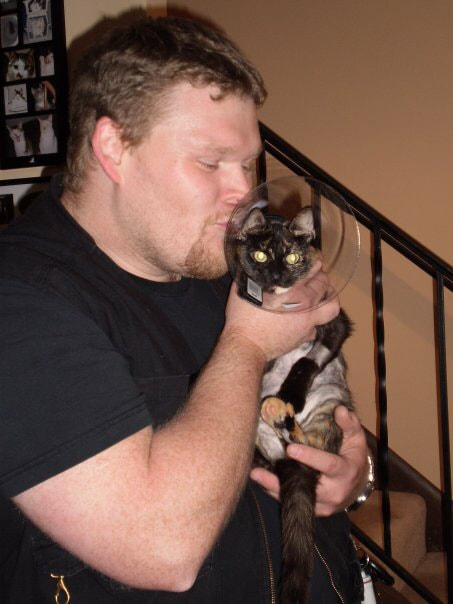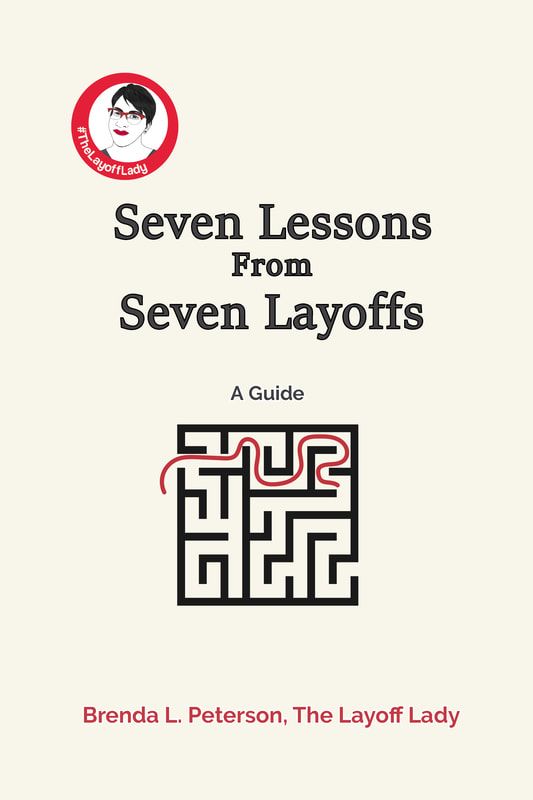Looking BackThere are several days each year when people typically look back and assess their lives. This could be the anniversary of a death, a holiday full of memories, or your birthday. For me, the day I reflect is Groundhog Day. February 2, 2006Early in 2006, my life was at a crossroads. My then-husband and I were in the process of getting divorced, and I was figuring out how to transition from a house to two houses and what co-parenting my 2-year-old daughter would be like. The one shred of stability I had was my job. I was happy to have one thing I could count on not changing. …and then February 2 happened. That morning, I went to work. I took a few minutes between meetings to create a spreadsheet to figure out if I could afford to buy a condo I’d looked at the night before on my own. As I saved my file, I got a tap on the shoulder that I had an impromptu meeting. I grabbed a pen and a legal pad and walked into a conference room full of executives who informed me that my position was eliminated due to restructuring because of the company being acquired. Welcome to layoff #2. I was in shock. I returned to my desk, deleted my spreadsheet (which had just become irrelevant), told my coworker Brad “I’m gone,” and found myself sitting in my car with a box containing all of my formerly workly possessions. From the parking lot of my ex-workplace, I called my soon-to-be ex-husband to tell him about my now ex-job. His only response was, “Huh.” Then, It Got A Little WorseThat weekend, I was on a road trip to visit some of my high school friends for a fun weekend of reminiscing and going to the Snowflake Ski Jump. On my way there, a local cop pulled me over for speeding. As I sat there, I glanced at the notification I’d just received from unemployment sitting in my passenger seat—the one that said I’d receive less money than the last time I’d been laid off—meaning I wouldn’t be bringing enough money in to cover my half of the mortgage. As the officer approached my window, I could feel the tears well up. I could not get a ticket, too. I would cry (as I often heard people threaten to do), but this was no empty threat that would come to bear only through theatrics. I was legit going to fall apart if this happened. This moment—sitting in the car with indications of my life failures greatest hits smacking me in the face was a low point in my life—rivaled only by my dad’s unexpected death when I was still in high school. Then, It Got a Little BetterFortunately, I think because of my street cred, which included being a native of a town nearby, I drove away ticket free. One thing had gone okay. Then I saw friends, connected with new people, and spent more time with my daughter. I also had the time and space to figure out what to do with myself now. The Transition BeginsIt was an ugly, ugly few months. I applied for countless jobs. I put our house up for sale. My daughter’s dad (new language from the book Mom’s House, Dad’s House) and I decided to move in tandem to Minneapolis, Minnesota from Madison, Wisconsin. I looked for jobs, made business connections, and stayed with friends on the way to and from my regular trips to Minneapolis. I didn’t sleep well for months. A tree fell down in my front yard the day of my open house, so I figured out how to have a giant tree removed while driving on I-90 back home from a job interview. That May, I found a job, a preschool for my daughter, a new place to live, and reconnected with one of my best friends from high school. Later, my daughter's dad found a job and moved to Minneapolis, along with his new girlfriend (a lovely person and good to my daughter). Then, to mix it up, I totaled my car, dated and broke up with a couple of people, and got Shingles three times in a row. Some days, after work, I would lie on my floor and look at the ceiling in my apartment, my low-cost therapy as I acclimated to all of the life changes. I adjusted to my new normal after going through every significant life change (save a death in the family and someone I love going to prison) I could think of to endure. Then, It Kept Getting BetterIn October, on the same day, I was approved for a car loan and found out that my house in Madison had new owners. Over time, I made two great friends from my job and got comfortable in a new city. I started dating someone who was great, then bought a house with and married that guy--who is an awesome stepdad and cat dad. I got laid off again and got another good job, then got laid off again and got an even better job. Things have gone pretty well through layoffs, reemployments, trials and tribulations. Through it all, my husband is awesome, my now-adult daughter is amazing, and the cats mostly tolerate my presence. A Frame of Reference for GratitudeSometimes, I see people who are unhappy with what they have. The strange upside of having gone through rough times is that it gives you a frame of reference. It reminds me to be grateful for the roof over our heads, my husband playing video games with our two cats in his lap, my healthy, happy daughter, and an ongoing stream of new challenges and adventures. I’m grateful for being active, able-bodied, and having a strong sense of well-being. I am grateful for winter heat, summer air conditioning, and all the machines that do my housework. I treasure mother/daughter movie nights, trips to the skating rink, and building relationships with new friends and colleagues. I value my roller derby skates, my outside roller skates, and my inline skates. I appreciate my cats, Zippy and Meathook, and the combination of disdain and affection they have for me. I am genuinely grateful for it all. Groundhog Day is my annual reminder to remember all these things. Learn More
0 Comments
Hooray! You Have an Interview!After goodness knows how many applications, FINALLY, you have heard back from a company who wants to talk with you! There is hope after all! Welcome to what is often step one of the interview process: the phone screen. Remember, each company may handle their interview process just a little differently. Regardless, some version of a phone screen is the starting point. A phone screen can be anywhere from the basic 30-minute voice-only call where they make sure you can speak coherently and understand what you applied for all the way up to a full-blown deep dive into your resume. Typically, you'll be speaking with a recruiter, not the hiring manager, at this point in the process. In this article, we'll talk about the more basic initial phone screen, how to prepare, and typical questions asked. ...And So It Begins: Message From a RecruiterIn many cases, a recruiter will reach out to you directly to schedule a phone screen through email. Many companies are using a scheduling program (like Calendly) so you can select a time that works for you. If this is the case, I would suggest taking a slot as soon as you can get in and comfortably complete the interview. For me, that would be the next day if possible. In other cases, you may receive a phone call from a recruiter that invites a callback. In these cases, they may be asking to schedule a phone interview with you, or they may just launch right into the phone screen while they have you on a call. Personally, I'll usually do my interview preparation before making that initial phone call back to the recruiter just in case they want to do it right then and there. Interview Prep: QuestionsDon't let the supposed informality of a phone call fool you. This is for reals an interview. You need to be ready to make a good impression and answer key questions. Here are the phone screen interview questions that you for sure need to be prepared to answer. Keep these in mind as you research the role, the company, and your interviewer. (We'll talk more about answering these questions well in a bit.) Here are the most common questions I have experienced on a phone screen:
Interview Prep: The RoleGiven that you may have applied for many, many jobs since the one for which you are interviewing, it's important to refamiliarize yourself with this role. Make sure that when you speak to your interviewer, you are positioning yourself as a strong candidate who is able to do (and wants to do) this specific job.
Interview Prep: The Company and Your InterviewerNow that you remember what the role is about, take time to learn more about the company. Remember, you're learning information to help you present yourself well, answer questions about the company and what they do, and even know about current initiatives and news about the organization.
Interview Prep: Your AnswersNow, back to those questions and strategies for answering each one. Is this still a good time for us to talk? Ideally, the answer is yes. This is a courtesy question recruiters often ask. Tell me about yourself. This is your opportunity to tell the recruiter a quick summary of your professional history and the unique knowledge, skills, and attitudes you bring to this role.
Why are you looking for a new job? Companies are interested in why you want to make a change. They may also be leery if they perceive that you have made many changes within a short time. They may be wondering if how they are promoting the position is working. They may just want to see if you trash your previous/current employer or are respectful. Again, be truthful, stay positive, and keep it short.
Why are you interested in this role? Companies often want to make sure you actually want the available position, not just any old job. Speaking about why you want to work in this particular role is a way to show you are being intentional about your next career move. This question also allows you to talk about who you are, what you know about the role, and the skills you bring.
What do you know about our company? Each company has its own personality. This question shows that you, as a job candidate, are a good fit for the organization and that you've taken the time to learn a little more.
What is your desired salary? While having salary ranges in job descriptions is becoming more common, it is not included in all job descriptions. Often, this question comes up very early in the process. You need to have a sense of your desired range and what is a typical range for the type of role for which you are interviewing.
What questions do you have for me? This is your opportunity to ask questions. Given that you have a job description and not much else about this role at this point, take time to think about questions to ask. There are also countless lists online of possible questions to ask. Google them and see which ones seem right for you. Remember, too, that some of these questions might be more appropriate for the hiring manager than the recruiter. (If you continue in the hiring process, you'll meet with the hiring manager soon.)
Learn More
by Brenda L. Peterson, The Layoff Lady A Harsh Truth About Job SearchingJob searching is hard. One of the things that makes it particularly challenging is that you can't actually control when you will get a new job. The whole process takes as long as it takes. To make all of that waiting bearable, it's helpful to focus on the aspects of your job search you can control. Measuring SuccessMy "day job" is working in the field of learning and development. One of my goals is to make sure that the performance support initiatives I'm designing (a class, a handout, a video) actually help solve a problem in a way that can be quantified. There are two kinds of indicators to help measure success: leading indicators and lagging indicators. Lagging indicators are what we all typically want to focus on. If I'm delivering a training session for salespeople on how they can sell a given product, the lagging indicator after training would be that they sold more of the product than they did before training and that more people spent more money on that given product--ideally being able to state who did what using dollar amount or percentage of improvement. One trick is that I can’t control how salespeople use the information presented in training or that individuals want or need to purchase the product. They are also lagging indicators because those results take a bit to show up. However, this is what success is supposed to look like. Leading indicators are where it's more helpful to focus. These are the easily measurable, countable, check-off-able items that are predominantly within your control. For this example, my leading indicators of success would be that we held a training session, having a list of who attended the training session, how they performed on an assessment based on the content covered, and that they received a job aid that contained talking points on the content covered. I can control all of these things. Of course, these leading indicators don't necessarily guarantee I'll achieve my lagging indicators. Still, they show that I'm going in the right direction and help position those salespeople to achieve the sales numbers we hope to see. Job Search: Lagging IndicatorsWithin the context of my job search, here are the tangible markers of success that I want to see:
All of these are lagging indicators. They are awesome because when they happen, they are definitive, and you know you have made legitimate progress toward getting a job. The trick is that many of these things happening at all--and what the timing might look like--is out of your control. Ways to Achieve the Bigger GoalWhile I can't directly make those lagging indicators happen, I can focus on strategies to position myself for more success in those areas, including the following:
Job Search: Leading Indicators.Now, to turn those squishier ideas into leading indicators (which are specific, countable, check-off-able things I can put on a to-do list), here are items I can actually do in a given week:
Having this list of tangible actions to take keeps me on track to achieve my goal of starting a new job. Keep On Doing The Right ThingsSome weeks, you do a lot of waiting, which makes you feel like you are terrible at everything and will never work again. Other weeks, people seem to be falling all over themselves to talk with you about yet another amazing job opportunity. During those weeks, you feel like this is all easy and you can do no wrong. During those slow weeks, it's helpful to remember to keep on doing those right things. Fine-tune as needed and know that your best strategy is to keep on keeping on. Put in the work, then trust the process. Learn More |

Just get laid off?
Click here for info on what to do first. Author7-time layoff survivor Brenda L. Peterson, The Layoff Lady, waxes poetic on layoffs, job transitions, & career resilience. Buy The Book!Were you recently laid off from your job and need a roadmap for what's next? Pick up a copy of my book, Seven Lessons From Seven Layoffs: A Guide!
Categories
All
Archives
July 2024
|








